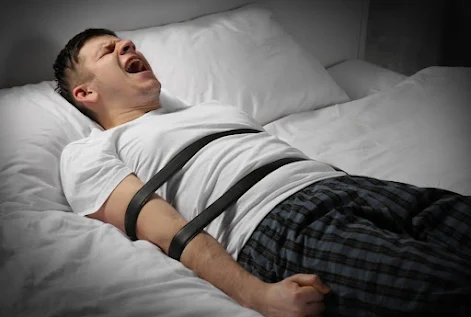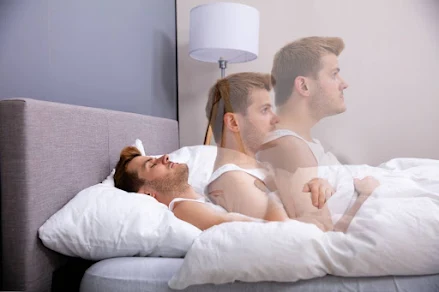How to Stop Sleep Paralysis In the Moment: Why You Can’t Move When You Wake Up in the Middle of the Night
Sleep paralysis is a strange phenomenon in which a person temporarily loses the ability to move, speak, or respond when they are about to fall asleep or wake up. It is a stage between wakefulness and sleep that frequently includes hallucinations.
Hallucinations, such as the presence of someone in the room or someone sitting on your chest, are common and may make it difficult for the person to breathe. Physical experiences like a strong current running through the upper body are also common.
Sleep paralysis is relatively common, according to a 2011 systematic review published in Sleep Medicine Reviews. The review analyzed 35 studies reporting lifetime sleep paralysis rates of more than 36,000 participants in total.
Researchers found that 7.6 percent of the general population experiences sleep paralysis, rising to 28.3 percent in high-risk groups, such as students who have a disrupted sleep pattern. Among people suffering from mental disorders, such as anxiety and depression, 31.9 percent experienced episodes of sleep paralysis.
This study sheds light on the need for more research on sleep paralysis to determine its impact on an individual’s physical and emotional state. Also, its relation to psychiatric and other medical conditions should be further analyzed.
When Does Sleep Paralysis Occur?
Usually, sleep paralysis occurs within two specific times during the sleep cycle.
While you are falling asleep, which is known as hypnagogic or predormital sleep paralysis. As you fall asleep, your body slowly relaxes and you may notice that you cannot move or speak.
While you are waking up, which is known as hypnopompic or postdormital sleep paralysis. During sleep, your body alternates between REM (rapid eye movement) and NREM (non-rapid eye movement) sleep. At the end of NREM, your sleep shifts to REM, where the eyes move quickly but the rest of your body remains very relaxed. REM is the deepest part of your sleep cycle when your brain has vivid dreams.
What Types of Hallucinations Occur in Sleep Paralysis?
Three types of hallucinations can occur during sleep paralysis, according to a 1999 study published in Consciousness and Cognition.
Incubus: In this type, people feel intense pressure on their chests and feel they cannot breathe. Here, the body is still in REM breathing mode.
Intruder: Here, people experience the feeling of a presence, fear, and visual and auditory hallucinations. It is described as a “hypervigilant state of the midbrain”, where people may be aware of even the smallest stimuli.
Unusual bodily experiences: In this type, people have an out-of-body experience like flying or floating. Here, different areas of the brain are active at the time the person awakens.
Who Can Have Sleep Paralysis?
According to the American Academy of Sleep Medicine, people experience sleep paralysis for the first time between the ages of 14 and 17. It can affect men and women of any age group and it is estimated that it occurs in between 5 and 40 percent of people.
How to Stop Sleep Paralysis In the Moment
Symptoms of sleep paralysis typically resolve within a matter of minutes and don’t cause any lasting physical effects or trauma. However, the experience can be quite unsettling and frightening.
Sleep paralysis that occurs in isolation doesn’t typically require treatment. But those who also have signs of narcolepsy should consult a doctor. This is especially important if symptoms interfere with work and home life.
Your doctor may prescribe certain drugs to help manage your sleep paralysis if narcolepsy is the underlying cause.
The most commonly prescribed medications are stimulants and selective serotonin reuptake inhibitors (SSRIs), such as fluoxetine (Prozac). Stimulants help you stay awake.
SSRIs help manage symptoms associated with narcolepsy.
Your doctor may order a sleep study called polysomnography.
The study results will help your doctor make a diagnosis if you’re experiencing sleep paralysis and other symptoms of narcolepsy. This type of study requires an overnight stay at a hospital or sleep center.
In this study, a healthcare provider will place electrodes on your chin, scalp, and at the outer edge of your eyelids. The electrodes measure electrical activity in your muscles and brain waves.
They’ll also monitor your breathing and heart rate. In some cases, a camera will record your movements during sleep.
Vaidya believes that the key to mitigating sleep paralysis is improving sleep hygiene by sticking to a good bedtime routine, which includes:
- avoiding blue light prior to sleep
- ensuring the room temperature is kept low
These bedtime routines can help ensure that you get a better night’s rest.




.jpg)








